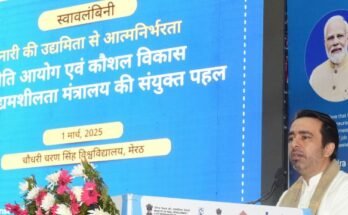New Delhi: Facing a shrinking population, chronically low birth rate, and rapid aging, South Korea is contemplating opening its borders for skilled workers, especially from countries like India.
In talks with India for about four years, the South Korean government plans to source blue-collar walkers from India.
India has offered to send its skilled workforce to South Korea basis the same model – Technical Intern Training Program (TITP), which it has worked out with Japan.
Under the Memorandum of Cooperation Signed with Japan in 2017 to significantly expand the bilateral cooperation between India and Japan in the skill development sector, the selected candidates from India undergo three-to-five years of internship in Japan.
Japan had TITP three decades ago in 1993 and has been sourcing skilled manpower from many countries including Vietnam, China, the Philippines, Nepal, India, etc. It also introduced Specifield Skilled Workers (SSW) plan too and signed MoU with India in 2021.
According to highly placed sources in the Indian Ministry of Skill Development and Entrepreneurship (MSDE), the matter was discussed many times during the India-Korea Finance Ministers meeting in the past just before the Covid-19 pandemic struck in 2020. The talks could not materialize further because of the pandemic.
“After receiving interest from South Korea for sourcing skilled manpower from India, we sent the draft plan as well as the Memorandum of Understanding (MoU) to the government of South Korea in 2019-20. However, apart from the Covid-19 pandemic, what delayed the matter was that South Korea wanted to include the world bank funding component to fund the skill program,” said a highly placed source in the Ministry of Skill Development and Entrepreneurship (MSDE), who preferred not to be identified.
The source further said that India suggested sending a skilled workforce to South Korea the way it’s doing with Japan under the TITP and SSW model.
“We have already studied the Japanese market very well and have put in place the required structure to send skilled manpower there. The concerned organizations on both sides who promote the movement of skilled manpower, decide on the labor welfare and other components such as training and testing, certification, etc have been identified and roped in. These organizations on both sides participate in the entire process to give the final shape to the structure as we have with Japan. We have given the example of Japan to many countries including South Korea,” the source said.
South Korea’s total population is expected to record its first decline this year, a grim assessment of its demographic situations amid the country’s chronically low birthrate, rapid aging, and a dip in incoming foreigners during the Covid-19 pandemic.
The country’s total population is estimated to have peaked at 51.84 million last year before falling to an estimated 51.75 million this year and an estimated 37.7 million in 2070, according to the latest medium variant projection by Statistics Korea.
The latest projection is much bleaker than the agency’s previous estimate in 2018 when South Korea’s population was forecast to begin to decline in 2029, Korea’s Yonhap News Agency has reported.
It showed that the country’s total population is likely to shrink to some 51.2 million in 2050 before declining to 37.7 million in 2070, a level was seen in 1979.
In a worst-case scenario, the country’s population will likely shrink to 31.53 million in 2070, a level recorded in 1969.




